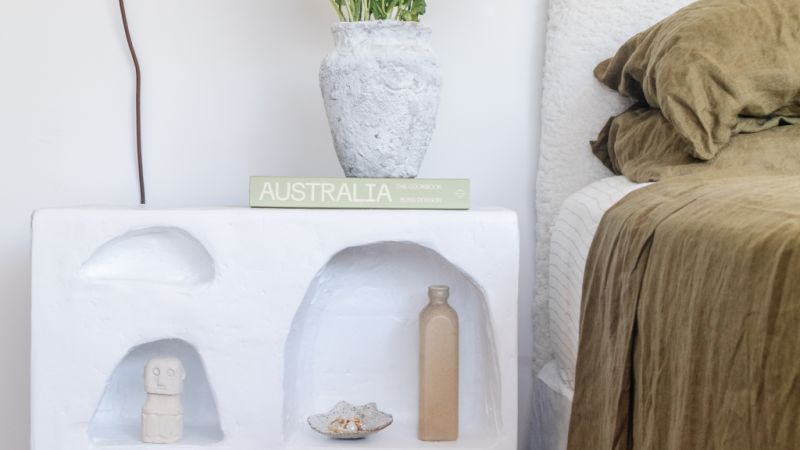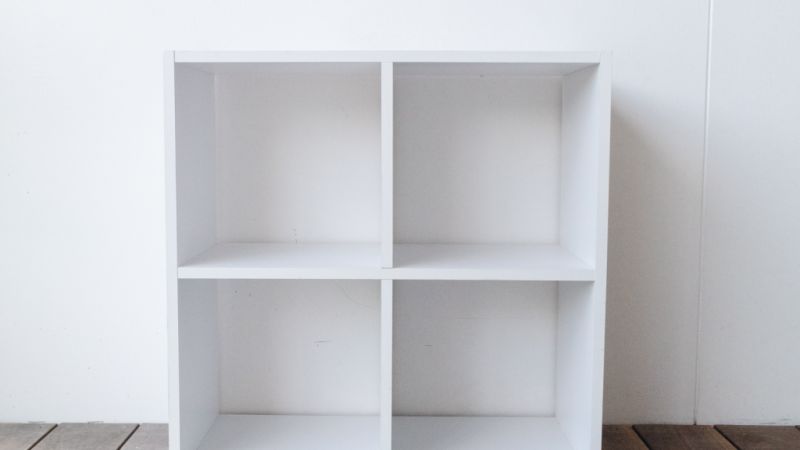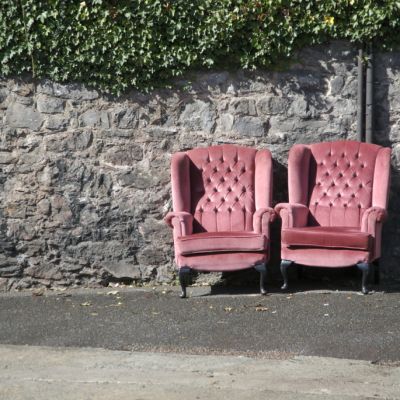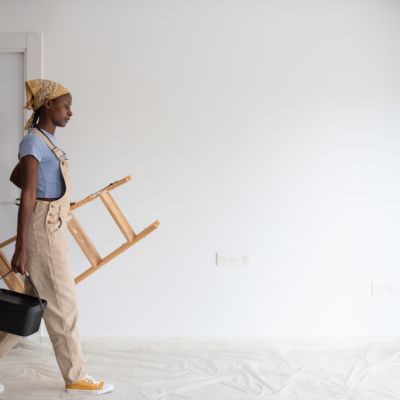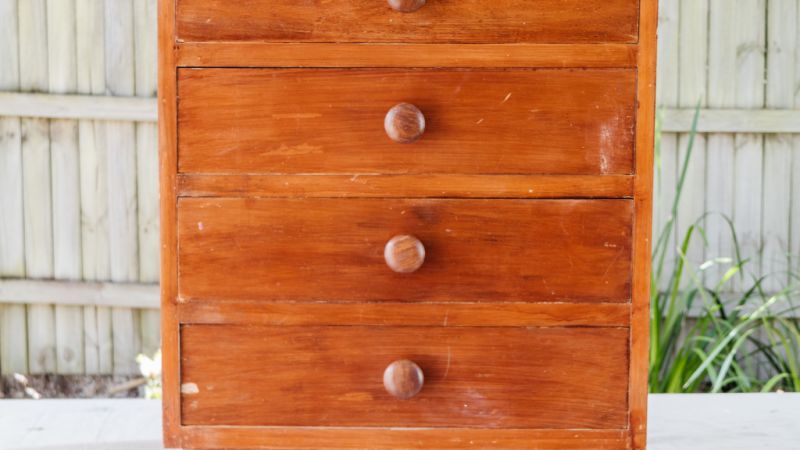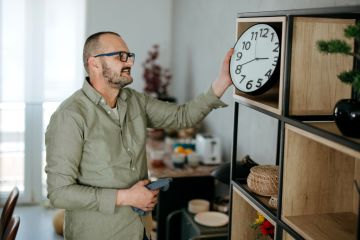How to create your own DIY furniture
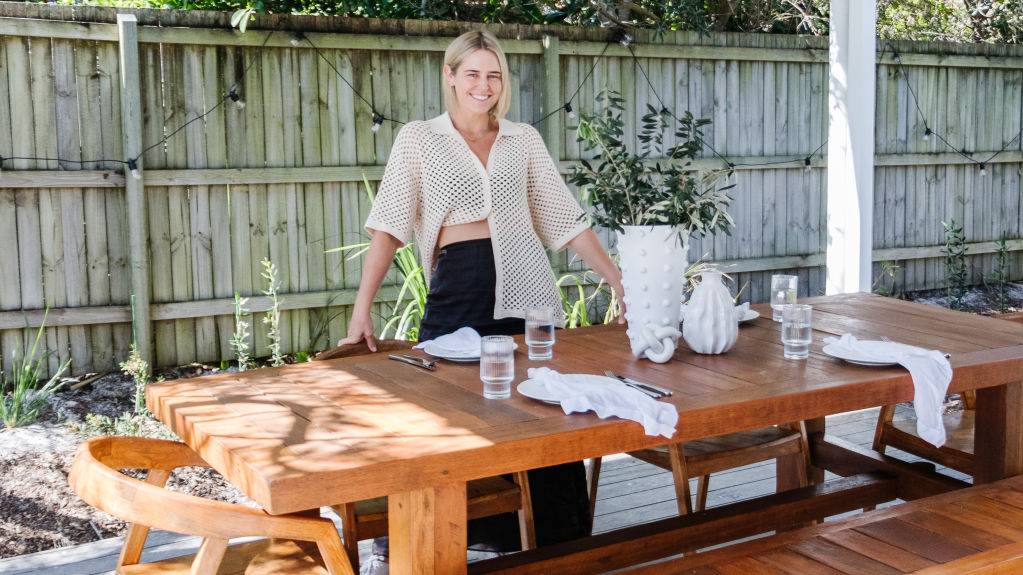
For any of us who’ve built a piece of furniture for our home, it probably involved a flatpack and Allen key. The thought of creating something bespoke – the perfect piece for that particular space – sounds daunting, but when we rely on mass-produced products are we also missing out on creative satisfaction?
We spoke to two women who’ve recently taken up making their own furniture who show it’s easier than you think, and more rewarding too.
Jaharn Quinn knows the feeling of flipping through magazines filled with gorgeously styled interiors only to have your buzz crushed when you realise the beautiful pieces are out of your budget.
This kind of unattainability was frustrating to her, but also inspired her to start making her own versions, upcycling items like old drawers, cupboards and sideboards destined for hard rubbish, and building other pieces from scratch.
When she found an old bookshelf at the local tip shop and transformed it into a DIY niche bedside table using cardboard, expanding foam and good old elbow grease, it got a huge response from her Instagram followers and fuelled her passion further.
“It makes me feel creative and happy,” Quinn says. “Making and upcycling brings me so much joy and satisfaction, but it’s so much more than that.
“My purpose is to make furniture design feel attainable, reduce the impact of fast furniture, and salvage items that are destined for landfill by sharing approachable upcycling and DIY tutorials.”
Noosa-based Quinn shares her how-to’s on her Smor Home website, where she devotes herself full-time after a career in fashion PR and social media management.
Her approachable methods use materials that are easily purchased, but some of them are unexpected: case in point, a fluted entry table which uses a $5 box of op-shop pool noodles for its base.
Leftover timber pieces repurposed as details on her brutalist-inspired drawers are unrecognisable from their unlovely beginning, while her DIY breeze-block shelves took 20 minutes to make and wouldn’t look out of place in an interiors magazine.
Quinn says it’s hard to choose a favourite project.
“Each ‘next project’ is the one I’m most proud of because it pushes me out of my comfort zone,” she says. “I’m always learning something new, I’m refining my skills and my style is evolving.”
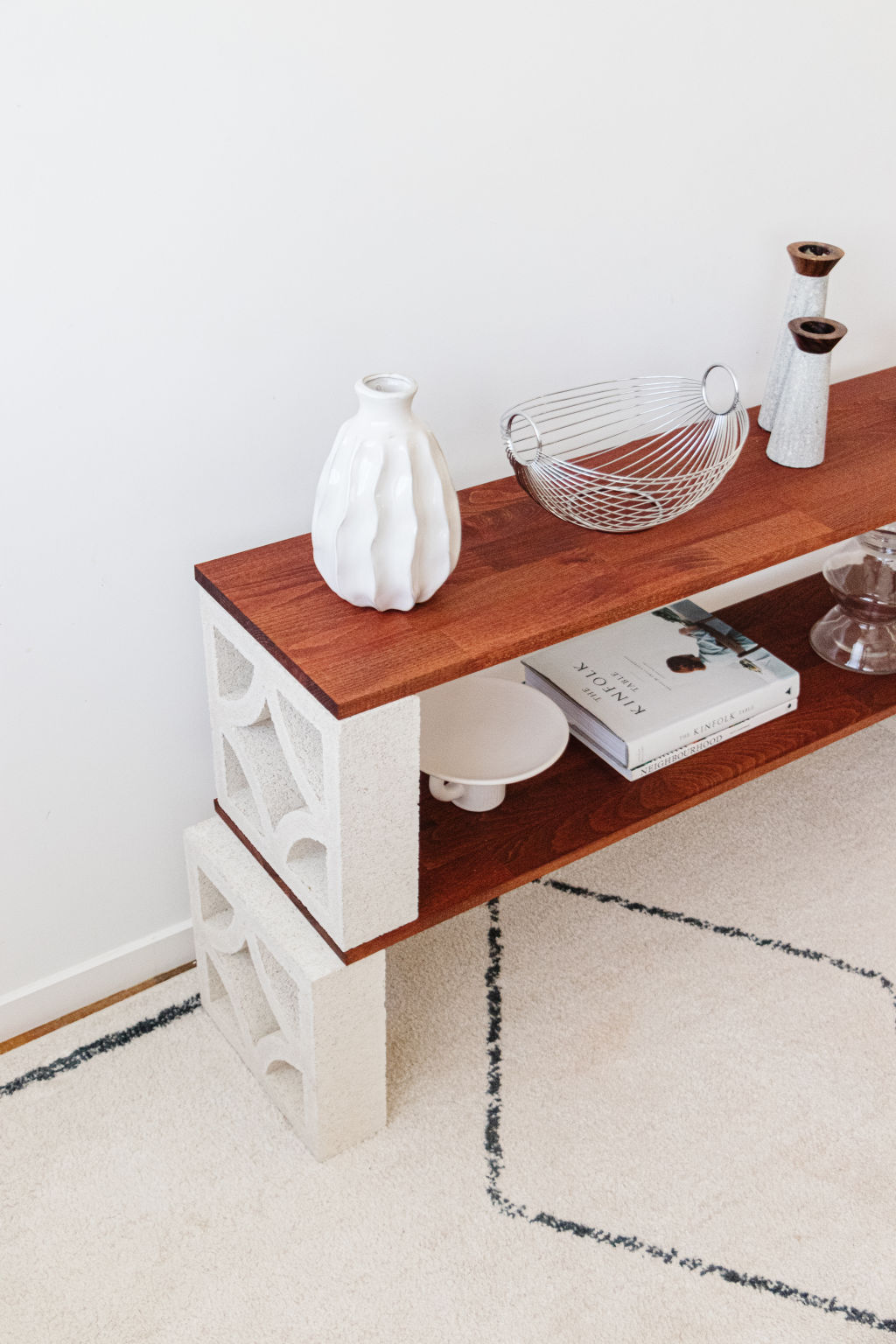
Another handywoman, Ballina-based Emma Fitzpatrick, loves building with timber and making custom, durable pieces to fit her family’s home.
She started building furniture in 2022 while on maternity leave, and she jokes it took a while to shrug off the out-of-place feeling among professional tradies in the hardware store while in pink leggings and with a baby on her hip.
Her first project was building bookshelves for her daughter’s room, like those from Kmart or IKEA, but made and measured using quality timber.
A basic project, but as a beginner she says, “it took me a really long time”. Yet, it helped her build confidence with foundational skills and using her drill and circular saw.
“I learned so much just by starting with a simple project,” says Fitzpatrick, a secondary school maths teacher.
The completed shelves also met her brief – they’re sturdy enough that her daughters Charlotte and Hallie can safely pull on them.
“I could even hang off of those shelves and they ain’t going anywhere.”
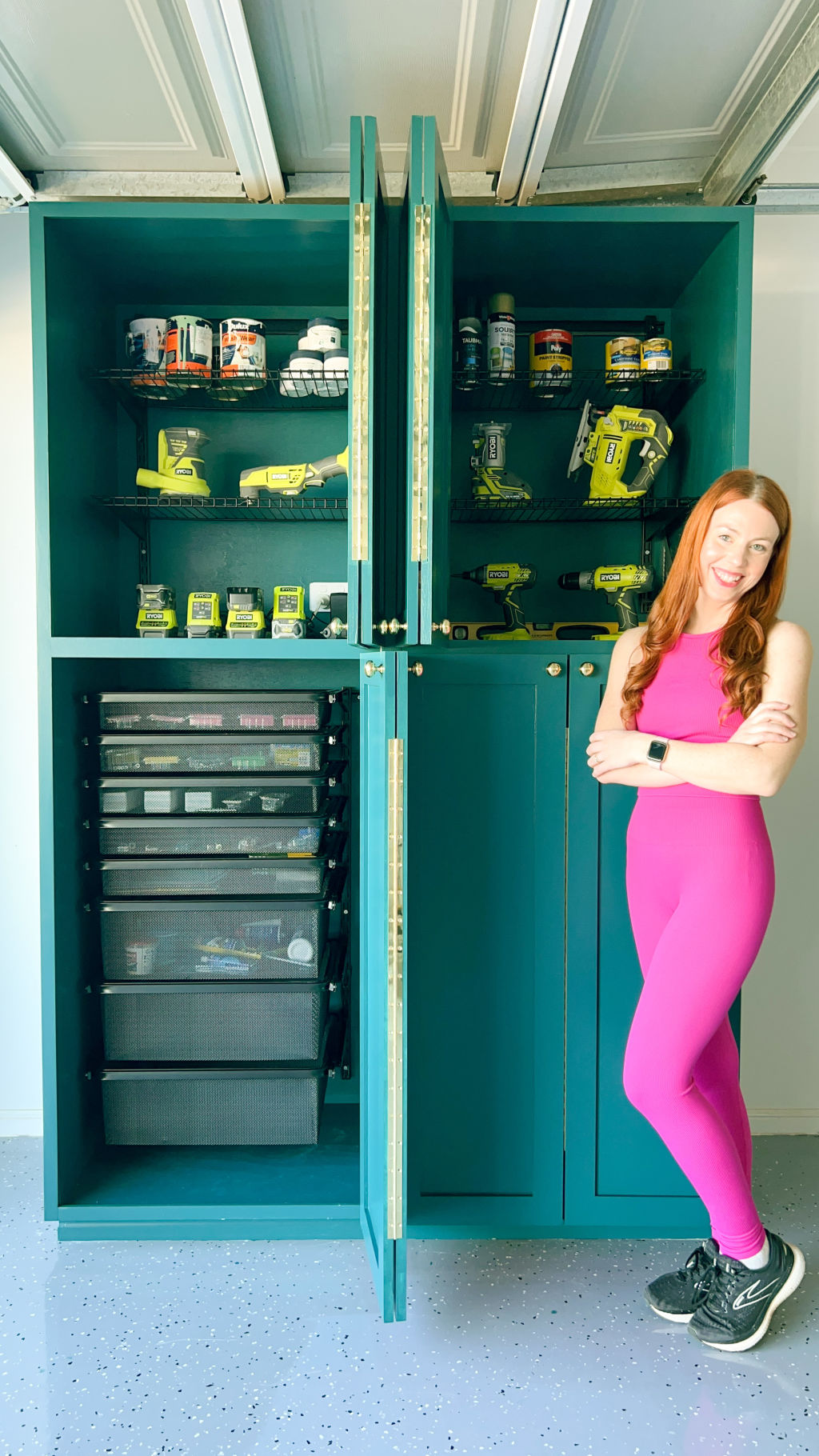
Since then, Fitzpatrick has moved methodically through projects of increasing difficulty, including a desk, garage shelves and, most recently, green workshop cabinets to house all her tools (including the impact driver she was given for Mother’s Day).
“I’m gaining so many skills every time I do a new project; something that was hard for me a month ago is now easy,” she says.
Fitzpatrick loves timber for its quality and durability but she’d never knock anyone for using flatpacks. “I still build a lot of flatpack stuff!” she says. Her mini mudroom project is based around flatpack cubes, adding custom shaker-style doors she built from scratch.
Fitzpatrick is building a following on her Instagram account, where she’s transparent about her mistakes, too.
“I definitely do try to keep it real,” she says, adding she’s had a side of mansplaining along the way from blokes giving unsolicited advice on “better ways” to do things. Fitzpatrick is firm. “I did it this way and it worked.”
Building furniture is her “me time” and a cherished hobby.
“I make time for it and love it so much, then at the end of it I’ve created something with my own two hands I can look at and be proud of. I just find that so fun.”
Tips for DIYers
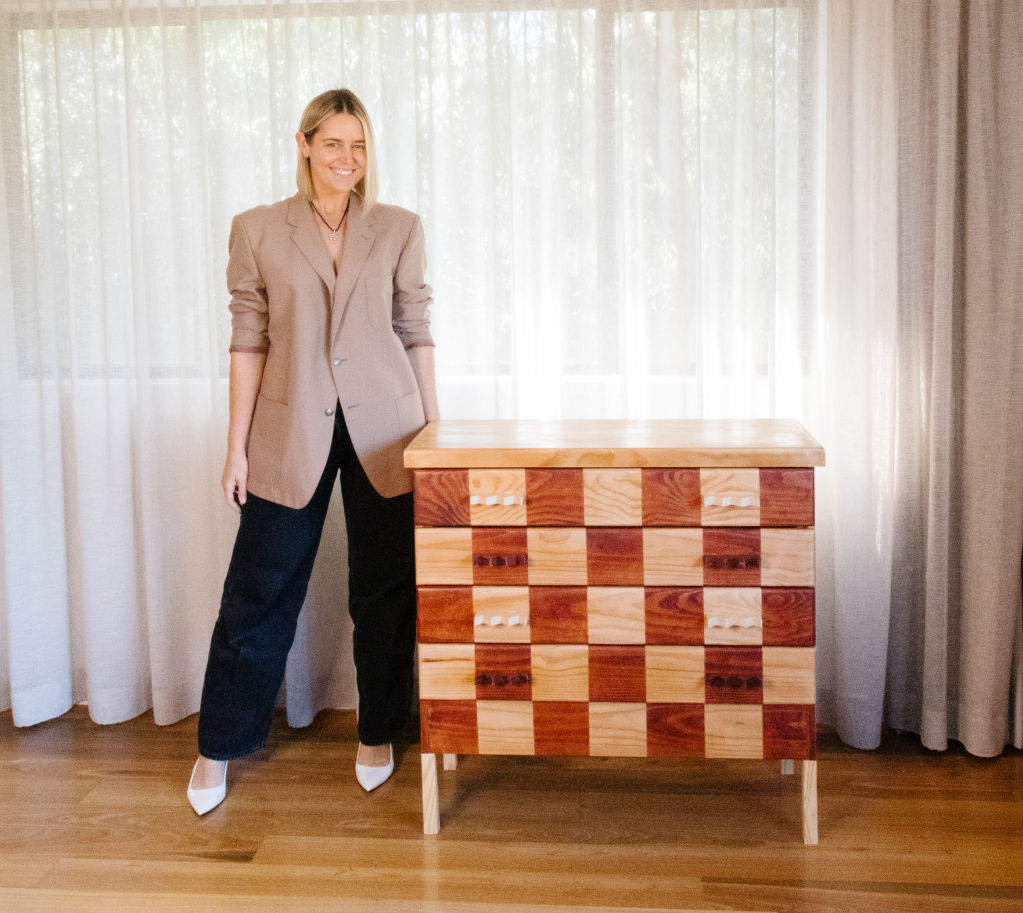
If you’re a newbie, Quinn recommends building your skills by doing a simple facelift of something you no longer love.
“Painting or staining second-hand furniture to better suit your interior style is a great starting point,” she says.
“All you need is a sander, water-based interior paint or stain in your favourite colour, roller, paintbrush or microfibre cloth.”
When you’re buying tools, Fitzpatrick says don’t go overboard.
“There are so many projects you could do with a drill and hand saw … I think a lot of people assume you need all this expensive equipment, and they use that as a barrier for starting. But you really don’t.”

We recommend
We thought you might like
States
Capital Cities
Capital Cities - Rentals
Popular Areas
Allhomes
More
